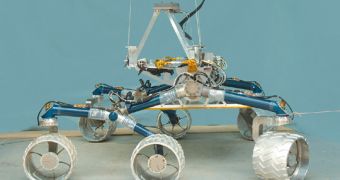The ambitious project of a complex rover that was supposed to roam the surface of Mars as a mobile laboratory may now be facing extinction, devolution, or, at best, a long postponement. This is due to the harsh financial difficulties experienced by the NASA laboratory, which is not able to cope with the costs that the technical matters would imply.
The rover was supposed to perform chemical analyses of Mars' surface in search for life. The project was initially estimated at about $1.2 billion (0.69 billion pounds or 0.88 billion Euros), but the overall costs have now risen to $1.5 billion (0.85 billion pounds or 1.1 billion Euros), while a series of other, non-financial problems have also emerged. If the situation escalates and the costs increase with more than 30%, the project will be canceled. Even as it is, the device's assembling is way behind the schedule, since it should be ready for takeoff sometimes next year.
The engineers and NASA officials will be meeting this Friday in order to discuss these aspects, but there are worries that this could, in fact, further complicate the matters. Delaying the launch until the next period when Mars and Earth are properly aligned for a shorter trip could boost the costs with an additional $3-400 billion (172-230 pounds or 222-295 billion Euros). Researchers are also concerned that potential delays or cancellations due to increasing costs may lead to NASA doing the same with other Mars-related projects and devices, like the atmospheric sciences mission proposed in September, or the future attempts of collecting soil and rock samples.
The rover was called “Scarecrow” because it still lacked its artificial computer brain. If it manages to overpass all the troubles emerging on the horizon, the craft will join its predecessors, Spirit and Opportunity, which have roamed opposite equatorial areas of the red planet for 4 years. Scarecrow is 4 times heavier than they were, and far better equipped with the latest in technology. Besides that, its decaying radioactive plutonium power source allows it to function for longer periods and in more extreme conditions than the two solar energy-fueled ones.

 14 DAY TRIAL //
14 DAY TRIAL //